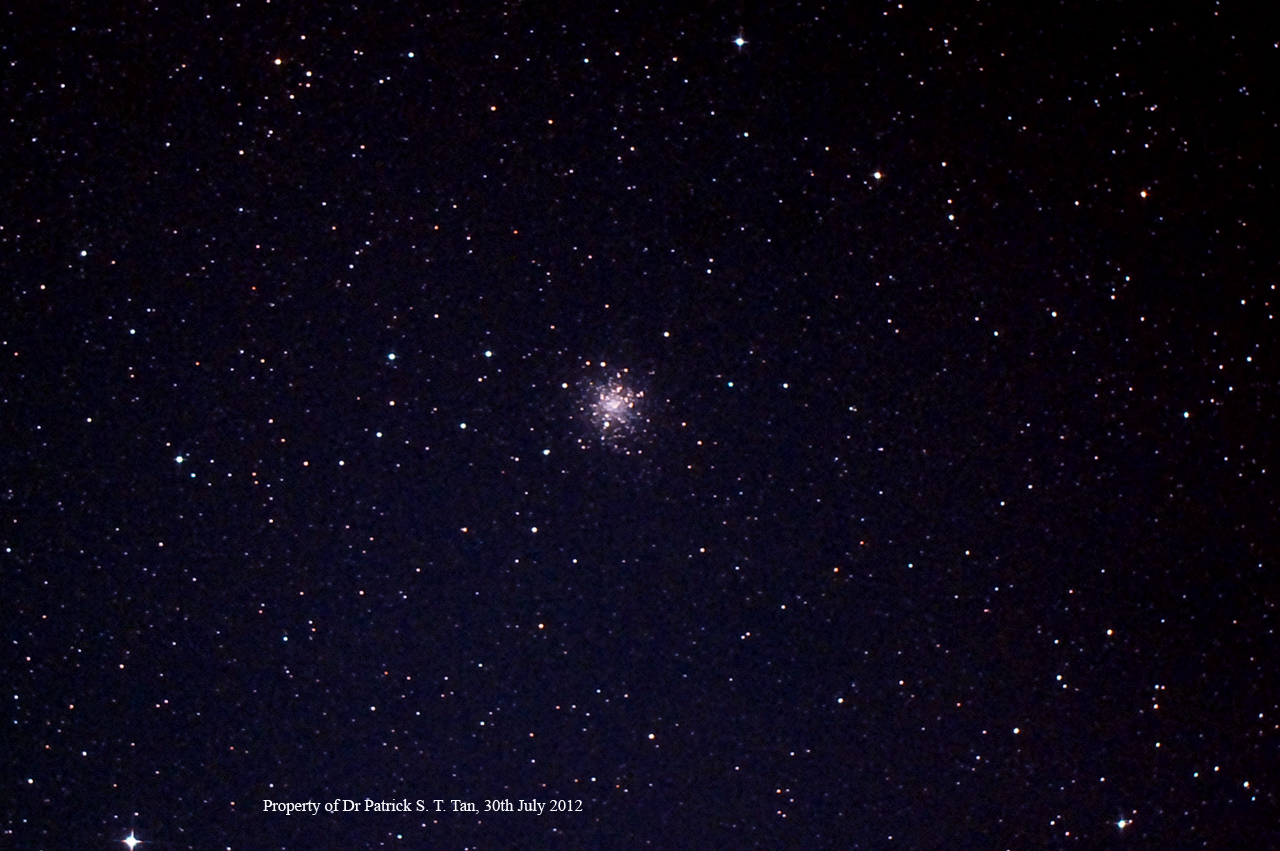
M12: Globular Cluster in Ophiuchus
Date: 23/07/12 Time: 2325hrs Location: Sunningwell Temperature: 17ºC Relative Humidity: 74%
Camera: Nikon D80 Scope: William Optics Z66 Apo Doublet at prime focus Field-flattener: William Optics VIII 0.8x focal reducer Mount: piggy-backed on Meade LX90 in equatorial mode Filter: Astronomik CLS (LPF broadband filter) Exposures: 5 x 10 minutes + 1 x 3 minutes ISO: 1600 F ratio: 5.9 Guidance: Autoguided
M12 is a binocular-visible globular cluster on the left of Ophiuchus' belly and lies only 3 degrees west of another binocular globular cluster, M10. It is almost a naked-eye object on a clear summer night so this shot ought to have been more dramatic than it is. In terms of size, it is rather modest because I continue to use my recently purchased field flattener which is also a focal reducer. This of course reduces the magnification of the object in favour of signal intensity. This clusters lies 15700 light years away and is thought to be a loose globular cluster - so not as old as most true globulars. It has a good number of relatively young (blue - A, B) and cooler orange and red coloured stars providing a more colourful aspect than most other globular clusters, especially in professional telescopes with higher resolution than my small refractor.
Although this is far from my best picture, I really enjoyed this session - it is rare that one has a summer night that is warm and still, and yet with good transparency and seeing, one usually has the former without the latter. It was just a thrill to sit out until past midnight with the crystalline heavens above, cleft by the Milky Way almost directly through the middle, crowned by Deneb and Vega overhead while a fox barked in a neighbouring field and the rest of Sunningwell lay asleep! I took 5 ten minute exposures until the battery ran out on my Nikon. I was too tired and troubled by the thought of having to work the following day to load the second battery for further exposures. Besides, further exposures might have improved the signal-to-noise ratio, but not the resolution, which was limited by the modest aperture of my refractor. As usual, the exposures were combined in Maxim DL after individual light pollution subtraction in Photoshop. The combined 5 exposures were then further combined with a 3 minute, background subtracted exposure, before black and white point setting and midtone enhancement. 1 pass with Noise Ninja with elevated unsharp mask settings (50%) was carried out to leave this chosen final image. I really enjoyed taking this picture - the more so because it might have been my only opportunity to enjoy the night this summer.
HOME PICTURES: Solar system PICTURES: Wide field